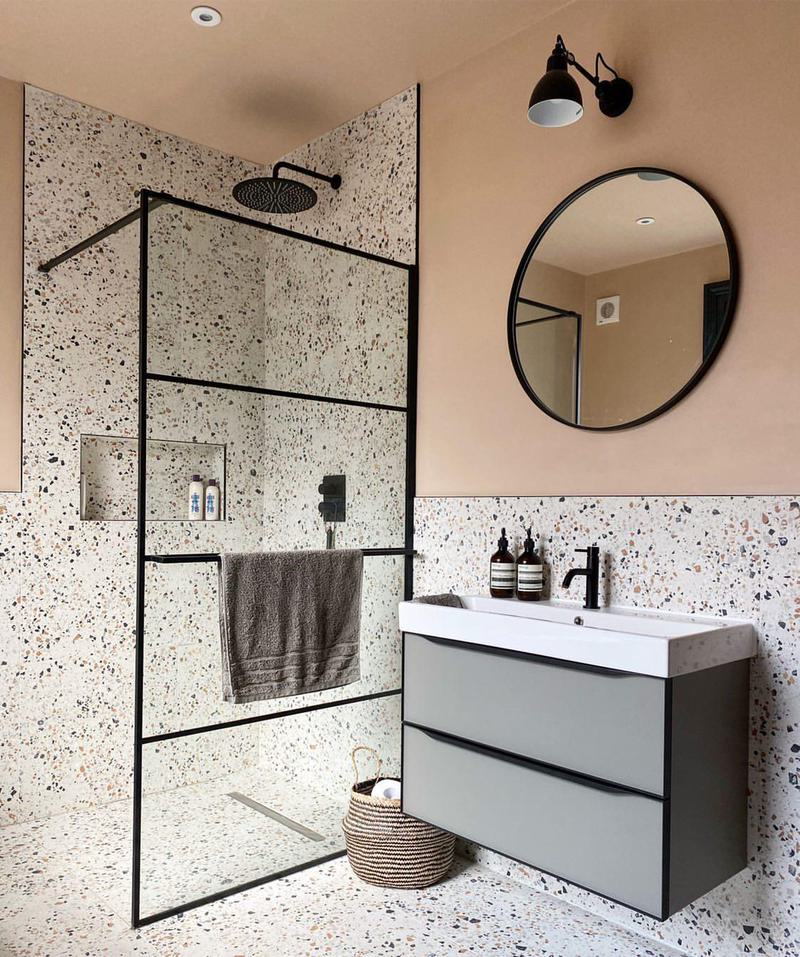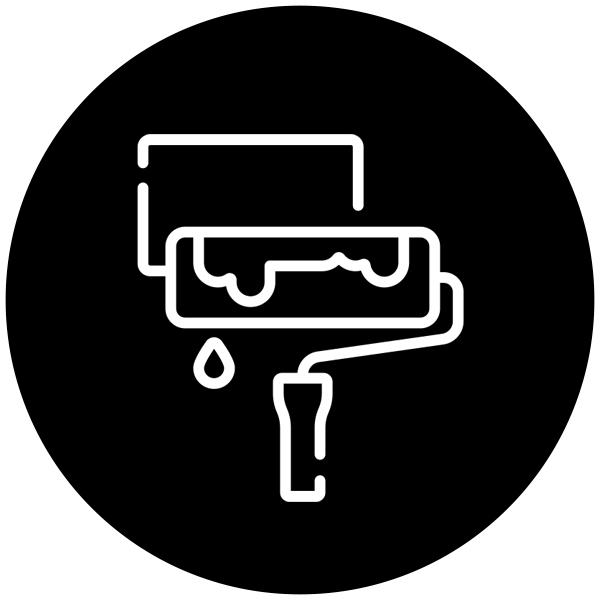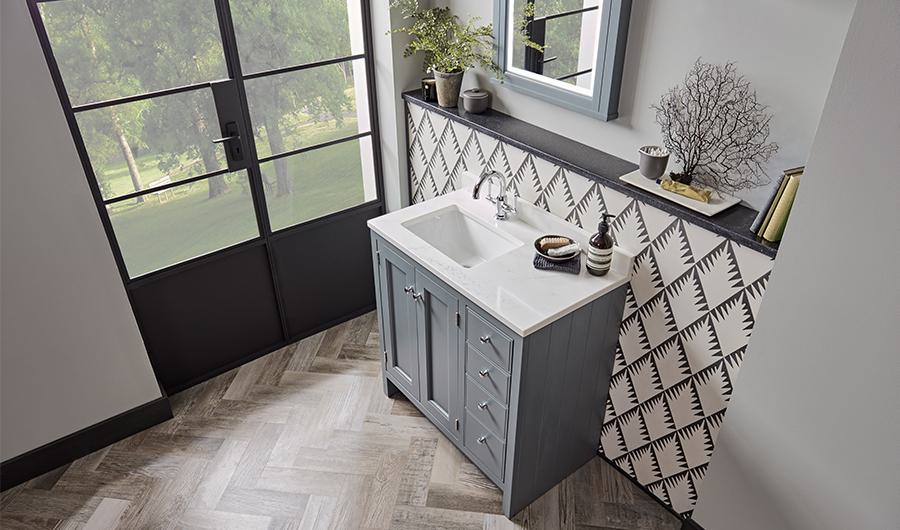Bathroom Buying Guide - Planning your Bathroom
Our comprehensive guide to planning your bathroom renovation.
Planning your bathroom renovation can sometimes seem like a mundane and daunting task. We have created a comprehensive bathroom planning guide packed full of expert advice to help you through each stage of your bathroom renovation.
Bathroom Planning Considerations
Key roadblocks to account for when planning your new bathroom.
Anyone that has undertaken any form of home renovation or build will know that there are almost always surprises in store, and not always the welcome kind! Unexpected costs, time-delays and underlying structural issues are just some of the problems you may encounter when bathroom planning, so considering these potential roadblocks early on will help to relieve or even eliminate stress later in the process. Here are some key issues to look out for when planning your bathroom remodel.
Bathroom Inspection
Before you embark on your exciting bathroom project, take time to study and inspect your bathroom space, particularly if you are renovating an older property. Bathroom floors can sometimes harbour damp or rotting wood, while water leaks may be hidden by existing tiles. Ventilation will also be an important consideration when bathroom planning. Asbestos, while rare in new builds, can be a problem with older houses and will require professional removal before you start to renovate. A building inspection is the best way to cover all bases and give you peace of mind. A full house inspection and report can cost in the range of £300 for a two bed house, up to £500 for a six bedroom house.
Find your Tradesperson
If you are new to renovating or building, it is unlikely that you will have many connections or have an existing working relationship with a tradesperson. In this case, it’s always good to ask friends or neighbours for their recommendations and see real-life examples of their work. Trader review websites are also very helpful, be sure that tradespeople provide photos and testimonials as evidence of their good work and your peace of mind. Many plumbers and installers are active on social media platforms, so be sure to have a peek at their past projects.
BUILDER If you're bringing a builder onboard, select one who shares your vision and communicates well. They will be key to your project. Builders will likely cover the demolition of the space, any brick or structural work required in addition to plastering and tiling work.
PLUMBER Plumbing systems are intricate and require expert knowledge. Plumbers will look after tasks like leak repairs and the installation of pipes and appliances. Be sure to always work with a licensed plumber.
ELECTRICIAN Work with electricity should always be carried out by a licensed professional – both for your safety and to ensure the room meets building regulations. Your electrician will install all powered items including lighting and powerpoints.
Bathroom Backup Plan
You can probably get by without a living room or kitchen for a week or two, but a bathroom is something of a home essential. Before you start your bathroom renovation, speak to your neighbours and friends about the possibility of using their facilities for the duration of the project. You could also make use of the showers at work or in the gym. Finally, if you are lucky enough to already have a bathroom, consider renovating one bathroom at a time.

Not ready to plan yet?
Start with some inspiration.
Find your style and get inspired with our inspiration guide, featuring customer renovation stories and lots of bathroom ideas.
INSPIRATION GUIDEBudgeting for your Bathroom
Realistic budgeting is the key to a stress-free bathroom renovation.
Avoid stress and strife later in the renovation process by being realistic about your budget early on and making as detailed a plan as you can. Here are some of the key things to account for when budgeting for your new bathroom.
Demolition
Unfortunately, those unsightly greige bathroom tiles won't get rid of themselves. The time and manpower it takes to demolish existing fixtures is sometimes overlooked, while removal of rubbish and debris can be costly, so factor in the price of a skip or removal into your bathroom budget. A six-yard skip is a popular choice for a single room clear-out, accommodates 65 bin bags and is priced from £110 and up.
COST: £110+
Plumbing
Consider whether you will need to re-plumb your bathroom or whether you are happy to use the existing plumbing system, as the cost difference could be significant. Always use a licensed plumber or bathroom fitter to install bathroom fittings and furniture, as to do otherwise, may void product warranties and put your property at risk. The average hourly rate of a plumber in the UK is £50-£60 per hour, though you may be able to get a fixed price for the complete bathroom.
COST: £50-£60 per hour
Electrical
You will likely require an electrician if you need your bathroom lighting to be rewired or changed, or a Part-P certified plumber who is skilled in both plumbing and electrical to fit an electric shower. Always leave this tricky part of your bathroom refit to the professionals, particularly where electricity meets water! The average hourly rate of an electrician in the UK is £40 per hour.
COST: £40 per hour
Plastering
If you plan to remove existing tiles, you will need a plasterer to create a clean, smooth surface for painting or retiling after. Often a forgotten part of the renovation, plastering ensures that the walls are well prepared and helps to waterproof the room. Costs for plastering vary widely, depending on whether your bathroom walls require a simple skim (about £400 for a medium room) or a full re-plastering (upwards of £700).
COST: Skimming £400 per room, Replaster £700 per room
Tiling
Tiles are an important feature in your bathroom, particularly wet areas such as splashbacks, showers and floors and often go a long way towards defining the style of your room. Tiling materials can vary hugely in cost, anywhere from as low as £8 per metre squared for a simple ceramic tile to £70 or above for honed marble. Likewise, a standard straight lay pattern with square grout joints and square tiles costs the least, while you can expect to add up to £16-20 per square metre for specialist tiling such as herringbone or mosaic.
COST: £20-£40 per square metre
Fittings & Furniture
The key components of your bathroom, it is worth taking the time to cost your fittings and furniture. This includes your bathroom vanity, your bathroom storage, bath, brassware and toilet. A good quality, guarantee-backed bathroom vanity varies in price from £200 for a cloakroom unit to £800 for a large, double basin 1200 unit. All Roper Rhodes units carry a ten year guarantee against manufacturing faults, while our basin & WCs carry a twenty year guarantee.
COST: from £200 approx
Decor
Finally, you will want to consider the finishing touches to your bathroom design, such as painting, decor and accessories. This is often the most DIY-friendly aspect of the bathroom renovation and where you could potentially save some of your budget.
COST: Dependant
Contingency & Scope
STRUCTURAL CHANGES When planning your bathroom layout, be sure to consider any plumbing position changes or structural alterations. It's important to discuss these with your builder or plumber upfront.
LOAD-BEARING WALLS Your demolition may involve the removal of a load-bearing wall. This requires a building permit and engineering certification which incurs an additional expense.
CHANGING SCOPE When you first start planning, your budget may be based on basic fittings with minimal requirements. Be sure to save room in your budget for quality products that will stand the test of time. Always add a 20% contingency.
COST: Add a 20% Contingency
Measuring your Bathroom
Key points to remember when measuring your bathroom.
Perhaps the least enjoyable of tasks when planning any renovation, measuring your bathroom properly is nevertheless essential to ensure all of your products fit as planned. Miscalculated measurements can cause costly delays down the track, so always measure twice before you make your selections.
Measure wall to wall and ceiling to floor, noting any projections and obstacles including windows, doors and external fittings. Draw or sketch your floor plan from overhead and also from a front-on perspective. Where you can, include photos to give your renovation team a clear picture of what they're working with.
Ceiling Height
Depending on the age of your home, you would be surprised how few buildings are in fact symmetrical, and older houses especially are likely to have mismatched wall heights. For this reason, be sure to measure the ceiling height on every wall as they may not all be exactly the same.
Existing Fittings
Whether or not you choose to replace them, it is important to measure and note the placement of any existing wall plumbing, electrical and light fittings.
Obstacles
Measure the location of obstacles (include doors, windows, and pipe chases) along each wall. Record their width, height and depth (from their outer edges).
Corners
Check the squareness of the corners at the floor, base and wall cabinet levels. So you can account for any issues you might have during installation.





